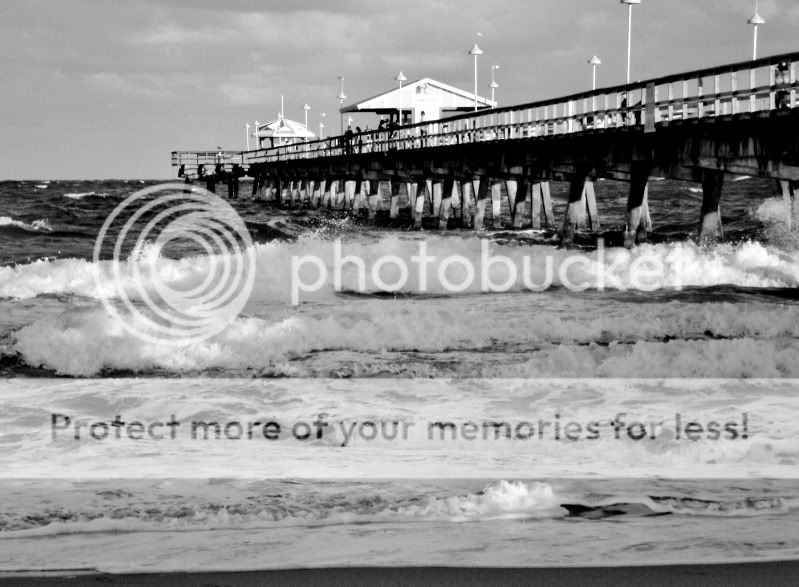blackrose89
TPF Noob!
- Joined
- Nov 14, 2011
- Messages
- 1,451
- Reaction score
- 265
- Location
- South Florida
- Can others edit my Photos
- Photos OK to edit
I have no activity on in this thread, and I don't care to. I just want to offer my two cents. I've been skimming through some of the thread, and if I am completely off-base please disregard lol.
What it seems we have here a newbie who doesn't want to take criticism. Seems to me that too many people want to post their photos, get Oohs and Aahs and be on their way. That's NOT what the forum is about. This forum for the most part is people serious about photgraphy trying to learn and grow. I also don't understand why people are so defensive and keep arguing. If you don't like someone's advice, if you think someone's advice is bull then move on! Yes people are harsh, but in the few weeks that I have seem an improvement in my photos and a hell of a lot more effort in my photos. I understand it, when I first started posting photos, I thought people were going to love it! Guess what, didn't happen. Was I devastated, yes? Do I regret the feedback, NO! My photos are all the better now for the criticism I have received. And also, if you're not looking for serious critique, this isn't really the place to do it, you don't have to post here.
Look at the difference in my photos
Before harsh critique

After Harsh critique

I understand it's no award winning photo, but it's a jump from the prior photo.
I'm also getting tired about people saying there should be no rules/guidelines to photography, that you can't teach art. Yes you can! There is art school, art classes. There are rules with any art! When you draw, there are guidelines. You can't just sketch a doodle and show it to a real sketch artist and have them say "OMG this is amazing" Picture taking and photography are TWO different things! Photography is an image creating technique that needs to sucessfully communicate a message between the author and the observer. I get tired of people being crappy at drawing, photography, painting and saying "Well it's art, so it's ok" People use the term "art" way too much as a get out of jail free card to cover up crappy artwork.
Also, another thing, the reason CC is so varying is because a technical factor that might be important to one person, may not be to another. To one person, perfect exposure might be important and is much more critical about that rather then someone's poor composition. And Vice versa. You have to take all of the pieces of advice and put them together as best you can. Guess what, if you don't like someone's advice, you can ignore it. Being defensive have never accomplished a critic to suddenly see the light, and like a photo.
What it seems we have here a newbie who doesn't want to take criticism. Seems to me that too many people want to post their photos, get Oohs and Aahs and be on their way. That's NOT what the forum is about. This forum for the most part is people serious about photgraphy trying to learn and grow. I also don't understand why people are so defensive and keep arguing. If you don't like someone's advice, if you think someone's advice is bull then move on! Yes people are harsh, but in the few weeks that I have seem an improvement in my photos and a hell of a lot more effort in my photos. I understand it, when I first started posting photos, I thought people were going to love it! Guess what, didn't happen. Was I devastated, yes? Do I regret the feedback, NO! My photos are all the better now for the criticism I have received. And also, if you're not looking for serious critique, this isn't really the place to do it, you don't have to post here.
Look at the difference in my photos
Before harsh critique

After Harsh critique

I understand it's no award winning photo, but it's a jump from the prior photo.
I'm also getting tired about people saying there should be no rules/guidelines to photography, that you can't teach art. Yes you can! There is art school, art classes. There are rules with any art! When you draw, there are guidelines. You can't just sketch a doodle and show it to a real sketch artist and have them say "OMG this is amazing" Picture taking and photography are TWO different things! Photography is an image creating technique that needs to sucessfully communicate a message between the author and the observer. I get tired of people being crappy at drawing, photography, painting and saying "Well it's art, so it's ok" People use the term "art" way too much as a get out of jail free card to cover up crappy artwork.
Also, another thing, the reason CC is so varying is because a technical factor that might be important to one person, may not be to another. To one person, perfect exposure might be important and is much more critical about that rather then someone's poor composition. And Vice versa. You have to take all of the pieces of advice and put them together as best you can. Guess what, if you don't like someone's advice, you can ignore it. Being defensive have never accomplished a critic to suddenly see the light, and like a photo.









![[No title]](/data/xfmg/thumbnail/37/37425-6c82b8d207549743954f4b99b56a8153.jpg?1734170466)


![[No title]](/data/xfmg/thumbnail/42/42279-f60778d39180ee6cd87fc84a15559b96.jpg?1734176692)